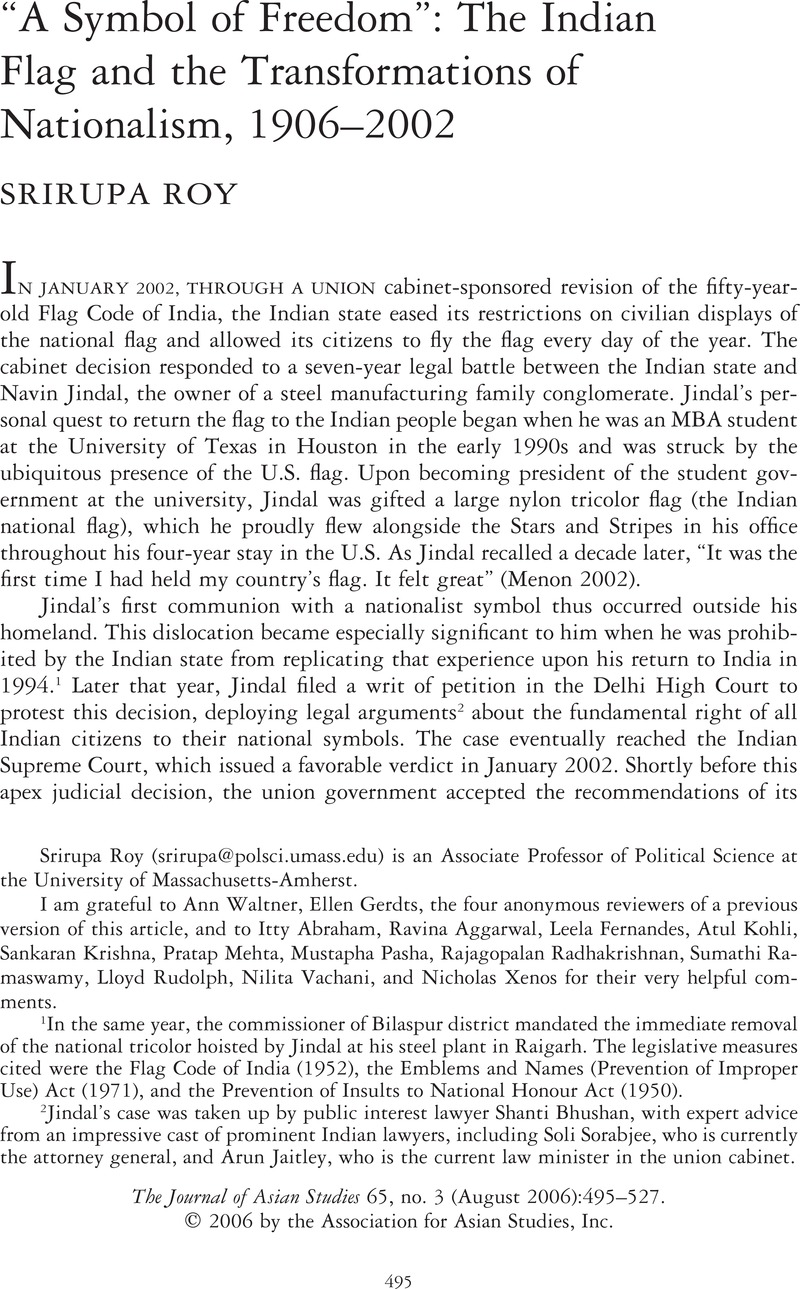Crossref Citations
This article has been cited by the following publications. This list is generated based on data provided by Crossref.
2010.
The Goddess and the Nation.
p.
151.
2010.
The Goddess and the Nation.
p.
177.
2010.
The Goddess and the Nation.
p.
283.
2010.
The Goddess and the Nation.
p.
117.
2010.
The Goddess and the Nation.
p.
301.
2010.
The Goddess and the Nation.
p.
237.
2010.
The Goddess and the Nation.
p.
353.
2010.
The Goddess and the Nation.
p.
73.
2010.
The Goddess and the Nation.
p.
13.
Vittorini, Simona
2014.
Two bullocks, a ladder and a lamp: electoral symbols in Nehruvian India.
Nations and Nationalism,
Vol. 20,
Issue. 2,
p.
297.
Brown, Lorraine
Richards, Steve
and
Jones, Ian
2014.
Sojourner perceptions of the St George Cross flag during the FIFA 2010 World Cup: A symbol of carnival or menace?.
International Review for the Sociology of Sport,
Vol. 49,
Issue. 1,
p.
102.
Elsner, Jaś
2020.
Empires of Faith in Late Antiquity.
Vecellio Segate, Riccardo
2021.
Flags, Color, and the Legal Narrative.
Vol. 1,
Issue. ,
p.
385.
Khasnobis, Barnashree
2024.
Songs of nation-building: a deliberation on selected nationalist songs telecast by Doordarshan from the 1980s to the 2020s.
National Identities,
Vol. 26,
Issue. 4,
p.
351.
Adeney, Katharine
and
Swenden, Wilfried
2024.
Multinational Democratic Federations: Comparing India with Multi-level Systems from the Global North.
Studies in Indian Politics,
Vol. 12,
Issue. 2,
p.
164.



